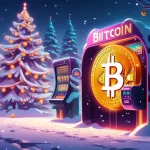Solmate Infrastructure Surges 50% with Solana Treasury Moves and UAE Validator Launch

Solmate Infrastructure Rockets 50% on Bold Solana Moves and UAE Validator Launch
Solmate Infrastructure (SLMT), a Cathie Wood-backed digital asset treasury deeply rooted in the Solana blockchain, captured headlines on Wednesday with a jaw-dropping 50% surge in its shares. This Nasdaq-listed entity, once known as Brera Holdings, unveiled a hard-hitting mergers and acquisitions (M&A) strategy, scooped up Solana (SOL) tokens at rock-bottom prices, and announced the launch of the UAE’s first high-performance Solana validator from a cutting-edge data center.
- Stock Spike: Shares soared 50%, hitting a high of $12.55 before closing at $11.70, pushing market cap to $754 million.
- UAE Validator: First Solana validator hardware setup completed in the UAE, aiming for top-tier network performance.
- SOL Bargains: Acquired $50 million in SOL at a 15% discount during a major crypto liquidation event.
Breaking Down Solmate’s Power Play
Let’s unpack this seismic shift. Solmate Infrastructure isn’t just dipping its toes into the crypto pool—it’s diving headfirst with a mission to dominate the Solana ecosystem. Backed by a $300 million private investment in public equity (PIPE) financing round—a mechanism where institutional investors buy shares at a discount before public release—completed in September, Solmate has heavyweight support from ARK Invest (holding an 11.5% stake), the Solana Foundation (with rights to appoint two board directors), RockawayX, and the UAE-based Pulsar Group. Leading the charge is CEO Marco Santori, formerly Chief Legal Officer at Kraken, with a board featuring intellectual heavyweights like economist Dr. Arthur Laffer and RockawayX CEO Viktor Fischer. Their goal is clear: build a Solana-focused treasury and infrastructure giant that bridges decentralized finance (DeFi) with traditional markets. For more on their aggressive strategy, check out the detailed report on Cathie Wood’s backing and Solana treasury moves.
The stock’s climb to an intraday peak of $12.55 before settling at $11.70 reflects market fervor for Solmate’s two-pronged strategy. First, their M&A approach isn’t about snapping up minnows for petty cash. As Santori bluntly stated:
“We aren’t interested in bolting on smaller companies. We’re targeting businesses for which our SOL treasury will be fuel for their engine of growth—just like it is for ours.”
This translates to a hunt for strategic partners—think DeFi protocols or NFT platforms on Solana—whose expansion can be supercharged by Solmate’s SOL reserves. It’s less about instant revenue and more about ecosystem synergy, though let’s not kid ourselves: mergers are a messy business, and failure to integrate or regulatory roadblocks could turn this bold vision into a costly misstep.
Second, Solmate’s knack for market timing shines with their acquisition of SOL tokens at a “historic discount.” Their $50 million purchase at 15% off during a liquidation event—where assets are dumped en masse often due to insolvency or forced sales by over-leveraged players—shows ruthless opportunism. For newcomers, SOL is the native cryptocurrency of Solana, a blockchain lauded for its high-speed transactions and low fees, often positioned as an Ethereum rival. While this bargain hunting is shrewd, it also underscores crypto’s brutal nature: one player’s gain is another’s bloodbath. Is this the kind of “deal” we want driving adoption, or does it just fuel the Wild West stigma?
UAE Validator Launch: A Strategic Masterstroke?
Now, let’s zero in on the UAE development. Solmate has finalized its first validator hardware setup in the United Arab Emirates, setting the stage for the region’s premier “performant Solana validator.” For the uninitiated, validators are the backbone of blockchain networks like Solana—they process transactions, secure the system, and earn SOL rewards for their work. A high-performance validator, equipped with top-tier hardware and connectivity, can handle transactions faster and more reliably, netting higher returns and bolstering network stability.
Choosing the UAE isn’t random. Known for its crypto-friendly regulations, including free zones tailored for blockchain innovation, and massive investments in tech infrastructure, the region is fast becoming a global hub for digital assets. Solmate’s move here is geopolitical chess—positioning itself at the crossroads of East and West in the blockchain race. Yet challenges loom: energy costs in the desert climate could strain profitability for validator operations, and while the UAE’s regulatory framework is welcoming, any shift in policy could disrupt long-term plans. Still, if successful, this validator could cement Solana’s footprint in a region hungry for tech disruption, potentially inspiring similar setups elsewhere.
Solana’s Institutional Appeal: Numbers and Nerves
Stepping back, the Solana ecosystem is riding a wave of institutional interest that’s hard to ignore. Twenty firms collectively hold 20.3 million SOL, valued at $3.86 billion, representing 3.5% of the token’s circulating supply. These aren’t casual investors—Forward Industries tops the list with 6.82 million SOL ($1.29 billion) and a newly assembled 25-member crypto advisory board. Helius Medical Technologies holds 2.2 million SOL ($417 million) after a $500 million private placement led by Pantera Capital, while DeFi Development Corp boosted its stake by 4.7% to $426 million, shrugging off market jitters. Beyond Solmate, others are piling in: VisionSys AI teamed up with Marinade Finance for a $2 billion Solana treasury initiative, and Fitell Corporation locked in a $100 million credit line for a Solana-based treasury.
Staking, where holders lock up SOL to support the network and earn rewards, is another cash cow. Institutional staking reserves exceed $1.8 billion, yielding an average of 7.7%—a juicy return compared to Ethereum’s post-merge staking yields hovering around 3-4%. This isn’t just speculation; it’s a signal that SOL is becoming a cash-flow asset for serious players. But not everyone’s all-in. BlackRock, a traditional finance titan, is reportedly scaling back its SOL exposure amid geopolitical volatility. Is this a sign of genuine concern over Solana’s stability, or just Wall Street getting cold feet when the crypto rollercoaster hits a bumpy patch? Either way, it’s a reminder that institutional faith, while strong, isn’t blind.
Risks and Realities: Solana’s Rough Edges
Let’s cut through the hype with some harsh truths. Solana’s track record isn’t spotless—network outages in 2021 and 2022, triggered by DDoS attacks and bot activity, led to hours of downtime, frustrating users and denting confidence. The September 2021 outage, for instance, lasted nearly 18 hours, halting transactions and exposing scalability flaws. While Solana has since rolled out upgrades like the QUIC protocol to mitigate congestion, skepticism about reliability and centralization risks persists. Unlike Bitcoin, often hailed as the gold standard of decentralization, Solana’s design prioritizes speed and low costs—sometimes at the expense of security or true distributed control. Can it withstand the pressure as adoption scales?
Then there’s Solmate itself. While their discounted SOL buys and M&A ambitions are impressive on paper, they’re not immune to market swings or execution flops. Their upcoming registration statement filing with the U.S. Securities and Exchange Commission by November 22 for PIPE investors shows a nod to regulatory compliance—a must for legitimacy—but red tape could slow innovation or scare off risk-tolerant crypto natives. And let’s not gloss over the FOMO stench around a 50% stock surge. Crypto history is littered with pump-and-dump corpses; investors jumping in without due diligence risk getting burned if the hype outpaces reality.
Bitcoin’s Shadow: A Maximalist Lens
As Bitcoin maximalists, we can’t help but view Solmate’s moves through the lens of BTC’s ethos. Solana fills niches Bitcoin doesn’t touch—think rapid DeFi transactions and scalable dApps—whereas Bitcoin remains the unassailable store of value, a digital gold built on unmatched security and decentralization. Solmate’s treasury and infrastructure focus is intriguing, but could a similar model work for Bitcoin? Imagine BTC-centric firms leveraging massive reserves for strategic investments while upholding the network’s purity. Yet Solana’s speed often comes with trade-offs Bitcoin avoids. Solmate’s play might inspire, but BTC’s path as the ultimate disruptor of centralized finance doesn’t need flashy validators or M&A sprees—it thrives on simplicity and resilience.
Key Takeaways and Burning Questions
- What Sparked Solmate Infrastructure’s 50% Stock Surge?
A potent mix of an aggressive M&A strategy, $50 million in discounted SOL purchases, and the UAE validator launch fueled investor excitement, driving SLMT’s market cap to $754 million. - Why Is the UAE Pivotal for Solana’s Validator Expansion?
With crypto-friendly regulations and robust tech infrastructure, the UAE offers a strategic base to scale Solana’s network, blending safety with global positioning, though energy costs pose risks. - How Solid Is Institutional Confidence in Solana?
Twenty firms holding $3.86 billion in SOL (3.5% of supply) and staking yields of 7.7% signal strong trust, yet BlackRock’s pullback suggests geopolitical or stability concerns linger. - Is Solmate’s M&A Vision a Blockchain Breakthrough?
Using SOL reserves to fuel synergistic growth is innovative, but merger failures or regulatory hurdles could derail this ambitious crypto treasury strategy. - What Obstacles Threaten Solana’s Momentum?
Past outages, centralization critiques, and market volatility remain hurdles, testing Solana’s scalability claims as institutional interest grows. - Could Solmate’s Model Reshape Bitcoin or Crypto Investment?
While Solana targets speed and DeFi, Solmate’s treasury approach could inspire Bitcoin-focused firms to blend traditional finance with decentralized ideals—if technical and regulatory barriers are navigated.
Solmate Infrastructure is placing a massive bet on Solana as a cornerstone of the next financial frontier, and the market’s buying into the vision—for the moment. But crypto’s a volatile beast; today’s hero can be tomorrow’s cautionary tale. Their blend of infrastructure, treasury management, and strategic timing is a masterclass in ambition, yet the path forward is riddled with technical pitfalls and regulatory landmines. As champions of decentralization and disruption, we salute Solana’s role in pushing boundaries Bitcoin doesn’t reach, while keeping a wary eye on its flaws. This Solana saga is just heating up—whether it’s a game-changer or a flop, only time will tell. Stick around; the ride’s far from over.



